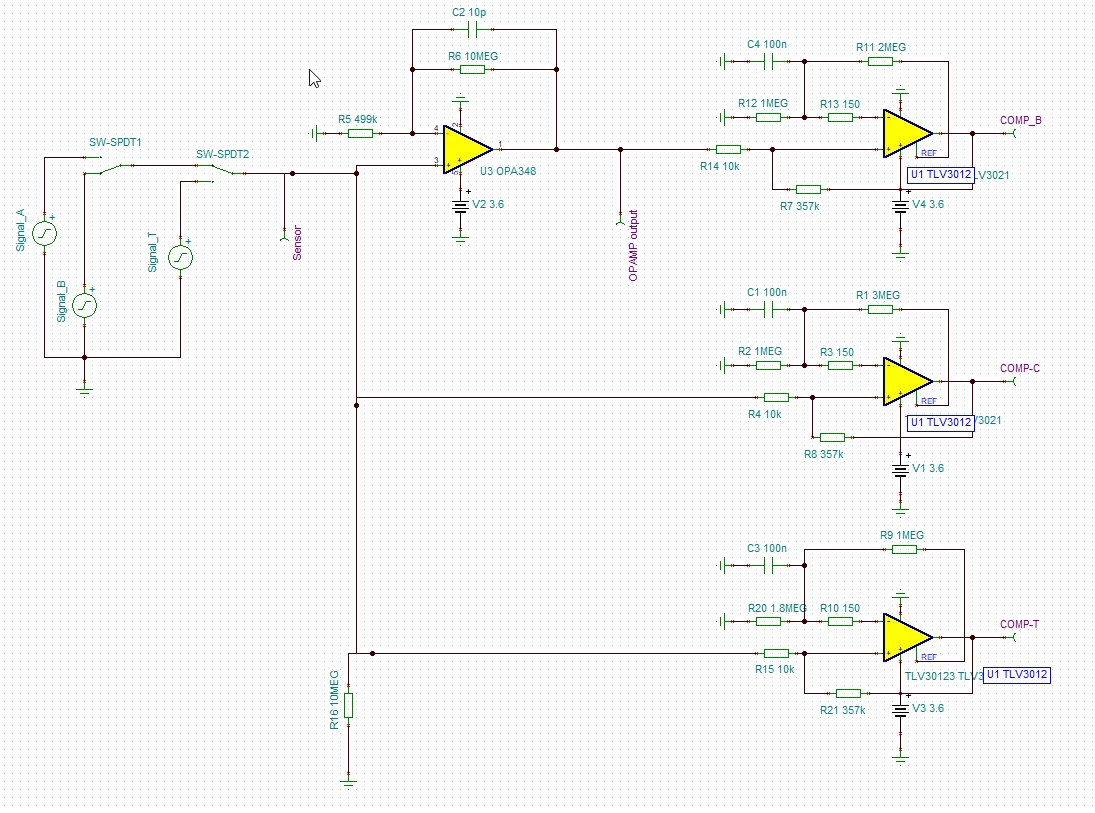Other Parts Discussed in Thread: OPA348, TLV3012
Hi,
With the support from this forum I have been working on a design of a 2 stage op-amp design. This design uses an OPA348 and a TLV3012. Purpose of the design is to detect the signal of the piezo element at MCU thru an INT. The piezo signal is relatively small (20mV).
The idea was to amplify the signal (1st stage) and in a 2nd stage have a comparator who is connected to an MCU.
- Opamp: gain of e.g. 21.
- Comparator: At a defined threshold level the output of the comparator is switched to “high” and detected by the MCU.
Simulation
In the TINA simulation I created an input signal for the op-amp of 30 mV and the op-amp output rises to approx. 630mV (gain of 21).
So the simulation works just fine (see schema). We have 3 signal levels which we would like to detect / only 1 sensor signal is that smaal that we have to amplify it. The others go directly to the comperator.
Real-live
In real live (prototype PCB) however I do not see the opamp output rising as I expected.
The opamp output does not follow the input * gain
- When driving the op-amp input to approx. 60-70 mV the opamp output suddenly rises to max output.
I am puzzled where the above behavior comes from or if there is anything which I am overlooking. Any help or suggestions are welcome.
Thanks a lot.



